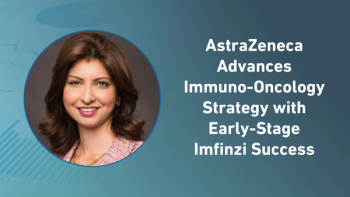
The Only Thing Certain is the Uncertainty: How to Re-Plan Future Clinical Trial Enrollment in Covid-19 Times
Sponsors need to develop a strategy on how to evaluate the impact of the pandemic on the re-start of halted trials.
Over the past months the COVID-19 pandemichas caused unprecedented disruptions and posing significant challenges to clinical trial operations and planning. Multiplesponsors announced temporary recruitment halts and new trial initiation have been delayed to ensure health and safety of the participants and clinical trial site teams. The breadth of those decisions is clearly visible in the change of enrollment rates when compared year-on- year. Recently, Medidata has reported a striking 75% decrease in the number of new patients entering trials for the first two weeks of April with the hardest hit in Cardiovascular therapeutic area where a 95% decrease was noted.1 Needless to say, there will be an impact on the drug development pipelines and ultimately time to the market across the industry.
Re-planning recruitment during the COVID-19 pandemic is a challenge. Planning is now even more crucial for operational success, so every sponsor needs to develop a strategy on how to evaluate the impact of the pandemic on the re-start of halted trials.
Re-planning can be started now despite the complexity and uncertainties related to the pandemic. Uncertainty can be addressed through creating multiple scenarios, ranging from the best to worst case assumptions, to help them assess a reasonable window-of-time, when recruitment may re-start and end. The beginning of recruitment of best-case scenario models should become a planned target for getting all the operational systems ready. The end of recruitment in the worst-case scenario could be used for assessment of risk to the compound development pipeline.
Areas to consider during re-planning
Every sponsor should establish agile, robust models allowing to react to changes as they appear. This is easier said than done. Extrapolating recruitment patterns from pre-COVID times is simply not accurate and a set of additional assumptions must be modelled in the re-modelling projections. Below we present a list of considerations which we believe may help to develop more realistic recruitment forecasts.
1. Assess patient drop-out
Building forecasts for on-hold trials should start with assessing if the total number of patients still to be recruited remains sufficient. A patient needs to be in the trial long enough to undergo planned interventions. Drop-outs are a serious problem as they may compromise statistical power of the trial. Rapid spread of COVID-19 has affected travel, availability of investigators, clinical space and logistics and supply, jeopardizing timely delivery of planned interventions. Already in the early days of the pandemic, retention concerns were clearly visible, with 56% of US sites and 81% of European sites indicating already-enrolled patients are “much less or somewhat less likely” to continue participating in trials.2
Despite the progress over the years in the adaptation of virtual visits, home medicine delivery and remote blood sampling, many procedures cannot be done remotely, nor some medications administered at home. Sponsors will see increased number of patients unable to achieve minimal complete treatment periods particularly in the areas heavily affected with COVID-19. It should be assessed, whether to replace those patients, and if so, those numbers need to be accounted for in the recruitment forecasts.
2. Project gradual re-start of the countries
Given there is a difference in how severely countries are affected with COVID-19, it is reasonable to assume that they will be ready to re-start recruitment at different times. To estimate those timelines with a degree of reliability, multiple aspects should be considered, including:
- Number of active COVID-19 cases
- Severity of governmental measures taken to suffocate the epidemic
- Country regulatory guidance on clinical trial management during pandemic
- Overall picture of healthcare pressure in a country
- Plans and timelines for easing the coronavirus lockdowns
Those factors are very dynamic and often hard to follow, so leveraging the intelligence of country management organizations to gain the know-how is essential. It needs to be ascertained that the Clinical Trial Management System is updated regularly to assist re-planning and robust benchmarking. Overall study plans should then be adapted based from country input and not vice versa.
Above mentioned information can be additionally supplemented with country specific pandemic peak projections that are published and freely available from governmental institutions. It is reasonable to assume the less the country is affected by COVID-19 and the milder the governmental restrictions, the faster it will regain ability for safe recruitment into clinical trials.
3. Account for progressive site re-opening
It is reasonable to assume that once patient enrollment may begin in a country, not all the sites will re-open at once. In some cases, the return to normal will be fairly quick and of lesser importance to overall projections, but there may be instances where the last sites will be opening months after the first ones. Importantly, estimating the time for site re-opening ramp up must be adjusted to the specific trial in question, as the factors contributing are heavily dependent on its design:
- Therapeutic area: trials targeting acute and severe indications are likely to be prioritized by sites for re-opening
- Investigational drug: more motivating for the sites to start enrollment quickly when trials provide medication highly competitive to the ones currently in standard of care
- Principal investigator specialty: specialists in critical care, anesthesiologist or pulmonologists will remain in high demand to treat the COVID-19 patients and will deprioritize clinical trials for longer
- Department/specific procedures involved: diagnostic tools and facilities used in management of COVID-19 patients will be of reduced availability for clinical trial use, with the ICU units likely to be the last regaining ability to participate
- Size: private practices or small outpatient clinics are more likely to restart quicker than large hospitals that will still be prioritizing frontline care of patients with the coronavirus for some time
- Location: COVID-19 impact will not recede uniformly across a country. Certain areas will remain affected for longer and projections will be affected should there be a high concentration of trial sites
- Refresher trainings/new staff training: of significance when needed prior to recruitment re-start and performedby a monitor on site rather than online
Finally, it is worth remembering that some of the sites participating in clinical trials may never be re-opened. It is a good time for sponsors to reassess the list of unproductive sites and prepare them for ultimate closure, rather than investing additional resources in boosting enrollment once the recruitment halts are lifted. Unfortunately, sponsors are also likely to be faced with a grim reality of unexpected site closures. First reports are arriving alarming that sites already struggle to remain solvent and may be laying off staff, which in turn will decrease their capacity to participate in clinical trials.3
Ultimately, at this point it is unclear what patterns of site re-opening will prevail since there is no precedent of recent global pandemics impacting clinical trials on such scale. However, with the time progressing and sites in the first countries slowly getting back to business, sponsors will be able to gain more clarity and clues about the site ramp up patterns. These early metrics can be then used for extrapolations to other countries still affected with COVID-19 and improved re-modelling projections.
4. Assume potential decrease in available patient pool at the sites.
Undeniably, the COVID-19 pandemic has a psychological impact on patients. Those with underlying health conditions, may be advised to stay away from hospitals during the pandemic peak unless necessary. Especially risk-group patients might be likely to delay doctor appointments or seek treatments at alternative outpatient sites. It has been also highlighted by multiple media reports, that people are avoiding hospital visits out of fear and there is a significant reduction in non-coronavirus patient visits seen across the globe.4 This behavior may easily persist for some time even after pandemic peaks. Particularly, should your trial target a COVID-19 vulnerable patient population, it would be advisable to factor this in, by decreasing initial recruitment rate projections, as reduced patient pool in the early months post site opening seems likely.
Interestingly, at the same time somewhat unexpected positive trend is potentially emerging for clinical trial enrollment. A survey from Continuum Clinical has showed increased interests in clinical trial participation among 68% of American adults diagnosed with at least one medical condition. Additionally, more than half of the respondents indicated their awareness of clinical trials has increased as a result of current news coverage. Even further, the number of Americans actively searching for “clinical trials” has more than doubled in the past 4 months.5 This encouraging data brings a silver lining for the future of clinical trial recruitment in those uncertain times.
Subrata Bose is the Head of Clinical Trial Analytics and Insights; and Agnieszka Pirinen is the Clinical Trials Analytics and Insights Manager, both for Bayer.
References
https://www.medidata.com/wp-content/uploads/2020/04/COVID19-Response3.0_Clinical-Trials_20200420_v3.pdf https://www.businesswire.com/news/home/20200323005672/en/clinical-trial-site-concerns-COVID-19-impact-enrollment https://acrpnet.org/2020/04/23/sites-struggle-to-remain-solvent-amidst-trial-slowdown/ https://www.nytimes.com/2020/04/06/well/live/coronavirus-doctors-hospitals-emergency-care-heart-attack-stroke.html https://www.businesswire.com/news/home/20200424005496/en/Survey-Shows-68-Americans-Interested-Clinical-Trial
Disclaimer: The opinions expressed in this article are those of the authors and do not necessarily reflect the company’s position
Newsletter
Stay current in clinical research with Applied Clinical Trials, providing expert insights, regulatory updates, and practical strategies for successful clinical trial design and execution.





.png)



.png)



.png)
.png)
